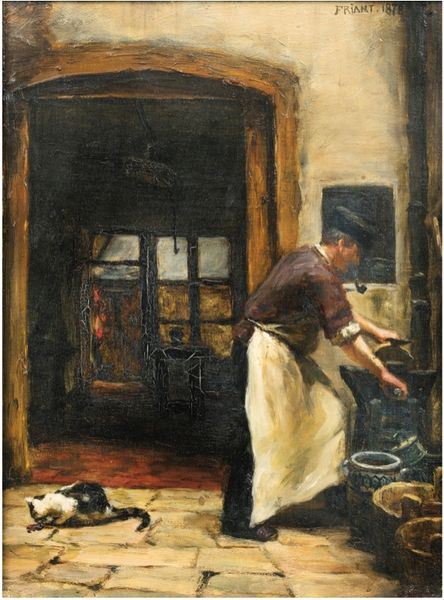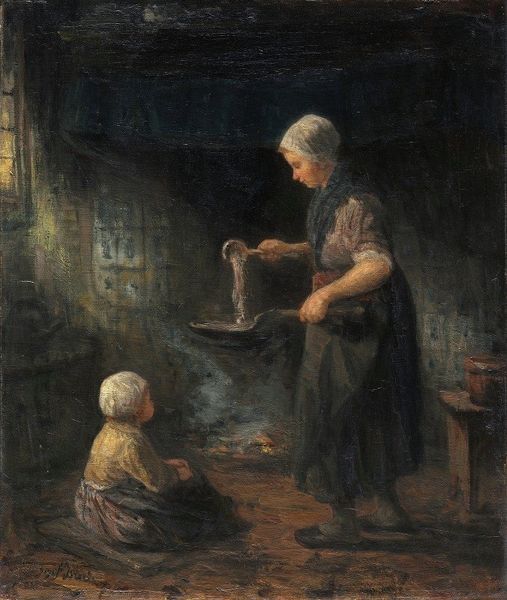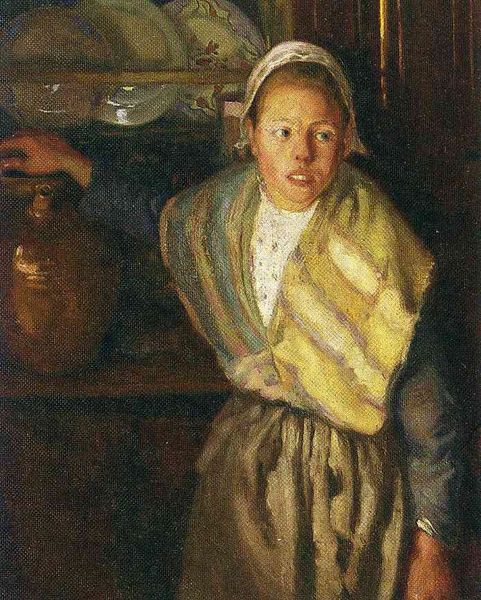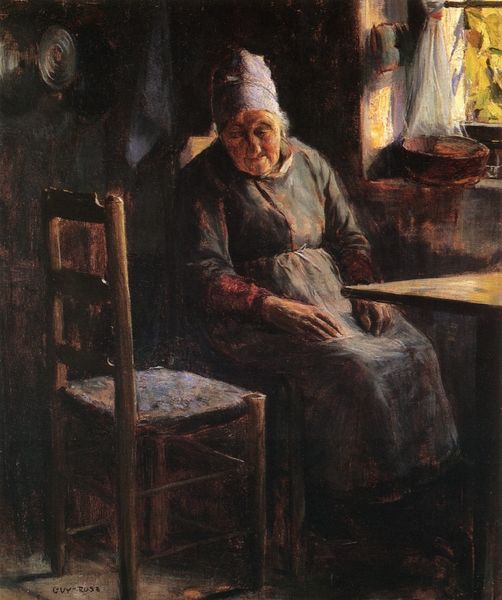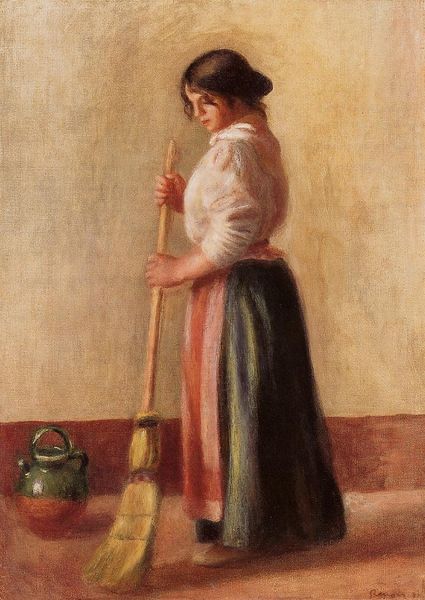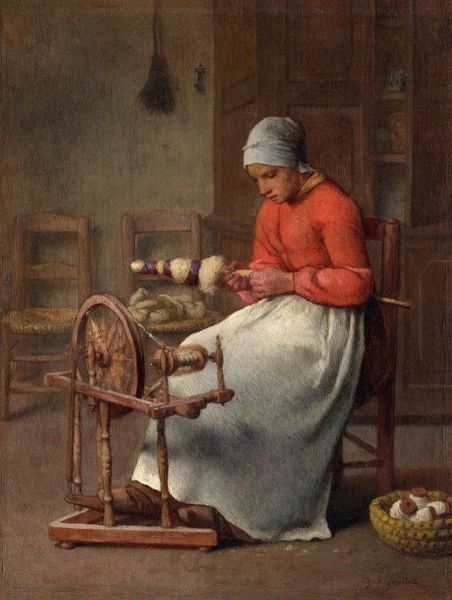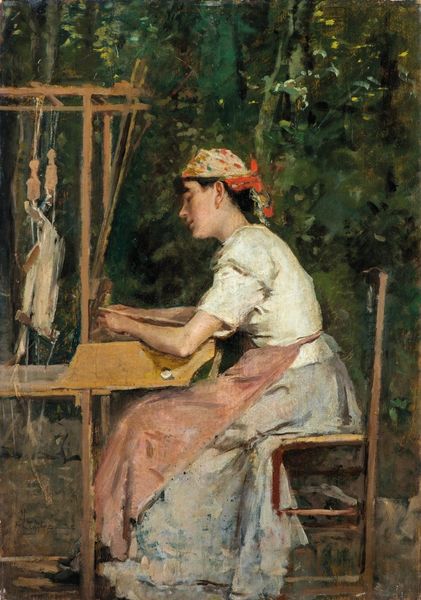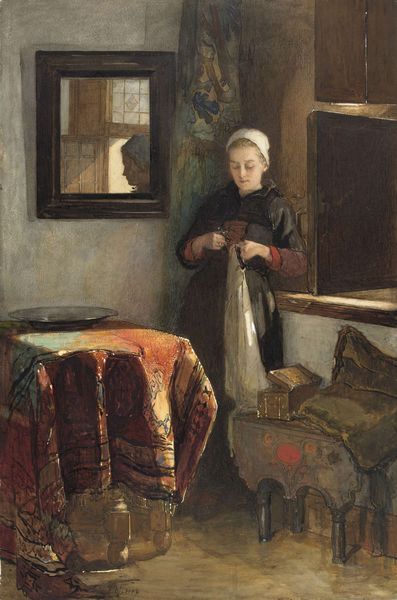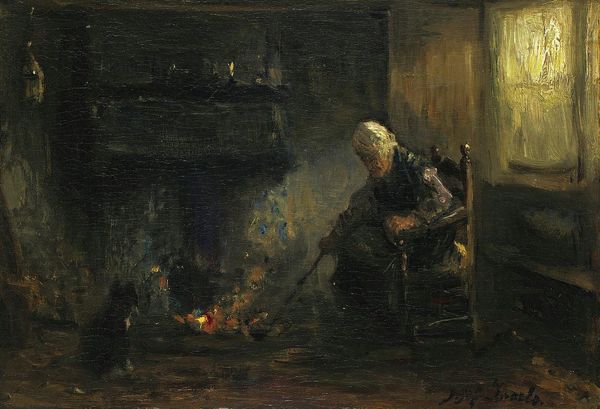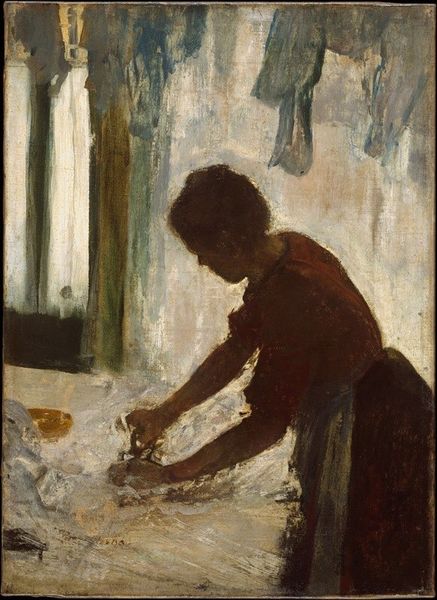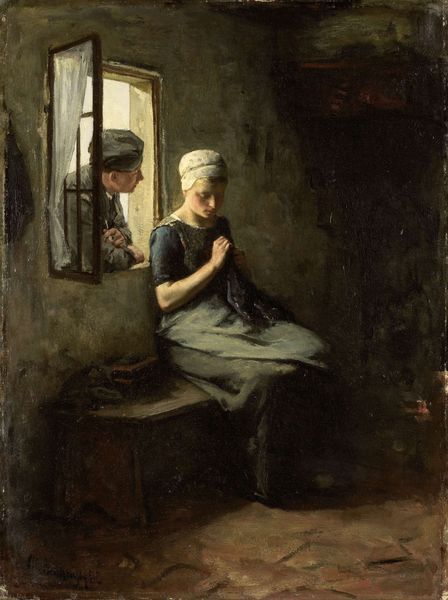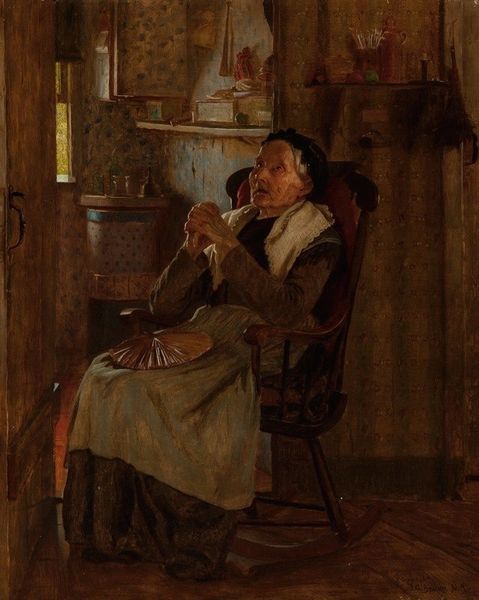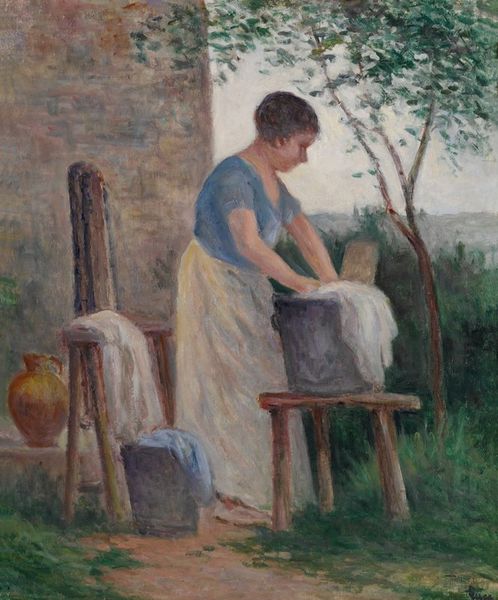
Copyright: Public Domain: Artvee
Curator: Here we have Albert Edelfelt's "Elli Jäppinen at the Stove, study", created in 1887. It offers a window into domestic life, rendered with incredible intimacy. Editor: Intimacy is right. There’s a quiet melancholy about it, isn’t there? She's working by a stove, yes, but there is a deep isolation despite the humble everydayness of the moment. Curator: Yes, it captures a still point, a pregnant moment in her daily grind, as she stares at us in what seems like a shared look. I can imagine her weariness, the heat of the stove... all the feelings it might spark. It reminds me of what my grandmother used to say: “Even stones have memories.” Editor: Stones absolutely do—or rather, the extraction, refinement, and arrangement of them always tells a story. The oil paint, layered so deftly to create her likeness—it’s derived from earthly materials, transformed through labor, and applied by Edelfelt to capture Elli, doing her own type of labour, near a hearth which I imagine represents life sustenance... Curator: He wasn’t just painting a woman at work, he was evoking an emotional landscape. Do you see how the light catches her face? He is playing on so many Romanticism themes: heroism in the ordinary. The humbleness is sublime. Editor: Sure, but Romanticism had its own economy. Consider the linen of her headscarf, likely homespun. What was the production process? Where did it come from? The means through which things are represented speak volumes too, right? A commercial ready-made colour represents the peasant classes...hmmm. Curator: Absolutely, though Edelfelt doesn't romanticize it gratuitously. It feels respectful, not voyeuristic. He immortalizes Elli not as an idealized figure, but as an individual whose existence deserves attention and notice. That’s no easy task, even in our world today, so long after Romanticism! Editor: I can agree with that. But even seeing her this way invites further questions. What was Elli paid for this ‘study?’ What did such portraiture mean to her at the time versus how it is collected and displayed today? Curator: Perhaps the true art lies in the questions it provokes, and where they lead us! It serves to emphasize art isn’t a static entity, but is dynamic and evolves with time. Editor: Well said! To the past... and futures imagined!
Comments
No comments
Be the first to comment and join the conversation on the ultimate creative platform.
